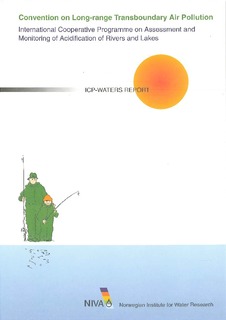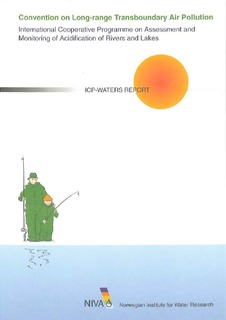| dc.contributor.author | Raddum, G. | nb_NO |
| dc.contributor.author | Rosseland, B.O. | nb_NO |
| dc.contributor.author | Bowman, J. | nb_NO |
| dc.contributor.other | Skjelkvåle, B.L. - Project manager | nb_NO |
| dc.coverage.spatial | Europa og Nord Amerika | nb_NO |
| dc.date.accessioned | 2014-08-01T10:44:10Z | |
| dc.date.available | 2014-08-01T10:44:10Z | |
| dc.date.issued | 1999-08 | nb_NO |
| dc.identifier | 4091 | nb_NO |
| dc.identifier.isbn | 82-577-3698-8 | nb_NO |
| dc.identifier.issn | 1894-7948 | nb_NO |
| dc.identifier.uri | http://hdl.handle.net/11250/210505 | |
| dc.description.abstract | The report presents the papers and conclusions from the "Workshop on biological assessment and monitoring evaluation and models", arranged by the International Cooperative Programme on Assessment and Monitoring of Acidification of Rivers and Lakes (ICP Waters) and the International Cooperative programme on Integrated Monitoring (ICP IM). The workshop was held in October 1998 in Zakopane, Poland. The workshop agreed upon the necessity of combining physico-chemical and biological monitoring. The importance of sampling at fixed locations and at fixed times were stressed, thereby minimising "noise" in the database. The biological monitoring should include examination of all aspects of the biota and their interactions, but it is clear that a very good indication of the detrimental ecological effects, due to acidification, is obtained from studying the macroinvertebrate communities and fish in the context of critical loads. The biological monitoring should continue with the invertebrate studies. The importance of including fish was emphasised, using methods of testfishing, ecotoxicology and bio-accumulation of heavy metals and POPs. In addition, the benefits of using other elements of the biota such as diatoms, other algae and zooplankton were shown, as was the importance of food chain effects, illustrated by the work on waterbirds in Canada. The need for more work to be done in assessing the critical loads for differnt regions (within a variety of water qualities) was highlighted. | nb_NO |
| dc.description.sponsorship | Statens forurensningstilsyn (SFT) | nb_NO |
| dc.publisher | Norsk institutt for vannforskning | nb_NO |
| dc.relation.ispartofseries | NIVA-rapport;4091 | nb_NO |
| dc.relation.ispartofseries | ICP Waters report;50/99 | nb_NO |
| dc.rights | Navngivelse-IkkeKommersiell-DelPåSammeVilkår 3.0 Norge | nb_NO |
| dc.rights.uri | http://creativecommons.org/licenses/by-nc-sa/3.0/no/ | nb_NO |
| dc.subject | sur nedbør | nb_NO |
| dc.title | Workshop on biological assessment and monitoring evaluation and models (ICP Waters report 50/99) | nb_NO |
| dc.type | Research report | nb_NO |
| dc.rights.holder | Norsk institutt for vannforskning/Norwegian institute for water research | nb_NO |
| dc.subject.nsi | VDP::Matematikk og naturvitenskap: 400 | nb_NO |
| dc.source.pagenumber | 96 | nb_NO |
| dc.subject.keyword | forsuring av ferskvann | nb_NO |
| dc.subject.keyword | internasjonal overvåking | nb_NO |
| dc.subject.keyword | biologisk overvåking | nb_NO |
| dc.subject.keyword | dose/respons sammenheng | nb_NO |
| dc.subject.keyword | national monitoring | nb_NO |
| dc.subject.keyword | freshwater | nb_NO |
| dc.subject.keyword | acidification | nb_NO |
| dc.subject.keyword | inter | nb_NO |
| dc.subject.keyword | biological | nb_NO |
| dc.subject.keyword | monitoring | nb_NO |
| dc.subject.keyword | dose | nb_NO |
| dc.subject.keyword | respons | nb_NO |
| dc.subject.keyword | relationships | nb_NO |
| dc.relation.project | O-86001-2 | nb_NO |


